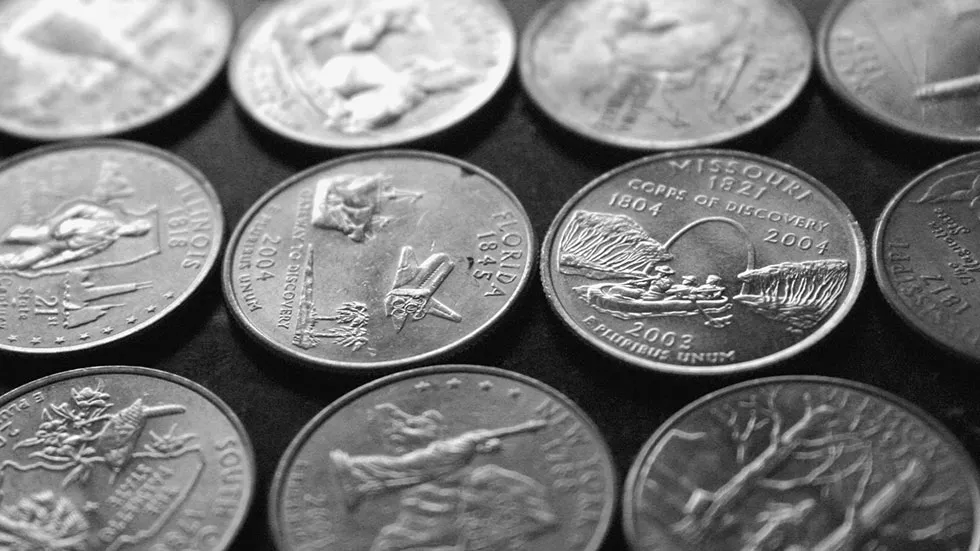The 1976 Bicentennial Quarter has become a hot topic among coin collectors, with some rare varieties fetching thousands of dollars at auctions. While many online sources have sensationalized the value of these coins, the truth is that only specific high-grade or error coins hold significant worth. Here’s a deep dive into why the Bicentennial Quarter is generating such interest and what collectors should look for.
A Historical Commemoration
The Bicentennial Quarter was issued in 1976 to celebrate the 200th anniversary of the United States’ independence. Unlike regular quarters, this special edition features a unique reverse design showcasing a colonial drummer, created by artist Jack L. Ahr. The obverse still bears George Washington’s portrait but includes the dual date “1776-1976,” making it a standout among U.S. coinage.
These quarters were minted in large quantities, with the Philadelphia, Denver, and San Francisco mints producing them in copper-nickel clad and silver compositions. Most of these coins remain in circulation and are worth their face value of 25 cents. However, certain rare varieties and high-grade specimens have attracted the attention of serious collectors.
What Makes Some Bicentennial Quarters Valuable?

While standard Bicentennial Quarters are common, certain factors can make them significantly more valuable:
1. High-Grade Coins
The condition of a coin plays a crucial role in its value. Coins graded MS67 or higher by professional grading services, such as the Numismatic Guaranty Company (NGC) or Professional Coin Grading Service (PCGS), can command premium prices. For example:
- A 1976-S Silver Bicentennial Quarter graded MS69 was sold for $19,200 at auction (source).
- Other high-grade quarters, particularly from uncirculated mint sets, can fetch anywhere between $1,000 and $5,000 depending on their rarity and condition.
2. Mint Errors
Minting errors add rarity to coins, making them highly desirable among collectors. Some of the notable errors found in Bicentennial Quarters include:
- Doubled Die Obverse (DDO): A 1976-D Bicentennial Quarter with a doubled die obverse, graded MS66, sold for $8,400.
- Off-Center Strikes: These occur when the coin is misaligned during minting, leading to an off-center design.
- Clipped Planchets: When a coin is struck on an incomplete planchet, it results in a missing portion of the coin.
If you believe you have a Bicentennial Quarter with a mint error, you can have it professionally evaluated by PCGS or NGC (PCGS Official Site | NGC Official Site).
Debunking Myths About the Bicentennial Quarter
In recent years, misinformation has spread online about Bicentennial Quarters being worth millions or even billions of dollars. These claims are false and not backed by credible numismatic sources. While rare varieties can sell for thousands, the majority of these quarters remain common and are only worth their face value unless in pristine, high-grade condition.
How to Identify a Valuable Bicentennial Quarter?
If you have a Bicentennial Quarter and want to determine its value, follow these steps:
- Check for a Mintmark: Coins with an “S” mintmark (San Francisco) are more likely to be silver and potentially more valuable.
- Examine the Condition: Uncirculated quarters or those graded MS67 or higher hold the most value.
- Look for Errors: Use a magnifying glass to inspect for doubling, off-center strikes, or other anomalies.
- Verify Composition: If the coin is silver, it is more valuable than its copper-nickel counterparts. Silver coins can be tested with a simple weight check (silver quarters weigh 5.75 grams, while clad quarters weigh 5.67 grams).
- Get It Professionally Graded: If you suspect your coin is rare, sending it to PCGS or NGC for certification is a good investment.
Where to Sell or Buy Bicentennial Quarters?

If you have a valuable Bicentennial Quarter and want to sell it, here are some recommended options:
- Auction Houses: Heritage Auctions (www.ha.com) regularly features rare coin auctions.
- Online Marketplaces: eBay (www.ebay.com) and Stack’s Bowers (www.stacksbowers.com) offer platforms for collectors to buy and sell coins.
- Coin Shows & Dealers: The American Numismatic Association (www.money.org) provides resources for finding reputable coin dealers.
Final Thoughts
The 1976 Bicentennial Quarter is a treasured piece of American history, and while most are only worth 25 cents, rare varieties can fetch thousands of dollars. Collectors should remain cautious about exaggerated claims regarding their value and rely on reputable sources for information and appraisal.
If you own a Bicentennial Quarter and suspect it may be valuable, consider having it authenticated and graded by a professional service. Who knows? You might just have a hidden gem in your collection!

Vikas is a seasoned finance writer with a keen eye for unraveling complex global financial systems. From government benefits to energy rebates and recruitment trends, he empowers readers with actionable insights and clarity. When he’s not crafting impactful articles, you can find him sharing her expertise on Social Media. You can connect with him via email at [email protected].









